Scientific name Todus Higher classification Todidae | Family TodidaeVigors, 1825 Phylum Chordata Rank Genus | |
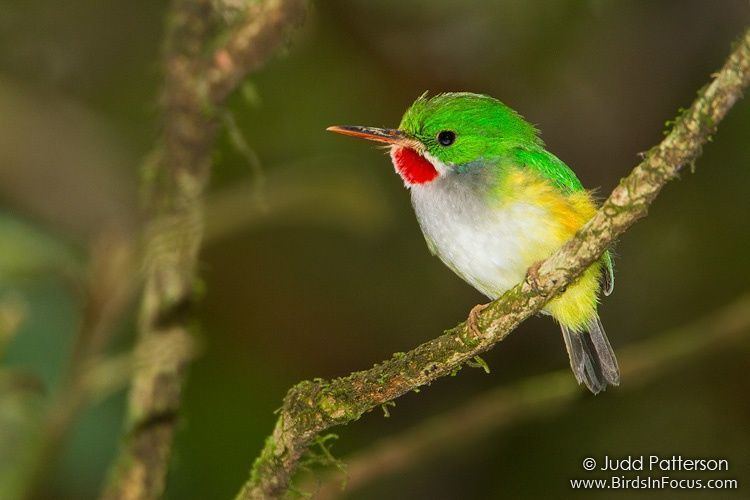 | ||
Lower classifications | ||
Broad billed tody
The todies are a family, Todidae, of tiny Caribbean birds in the order Coraciiformes, which also includes the kingfishers, bee-eaters and rollers. The family has one living genus, Todus, although another genus is known from the fossil record.
Contents
- Broad billed tody
- Cuban tody
- Taxonomy and systematics
- Distribution and habitat
- Description
- Diet
- Breeding
- Species list
- References
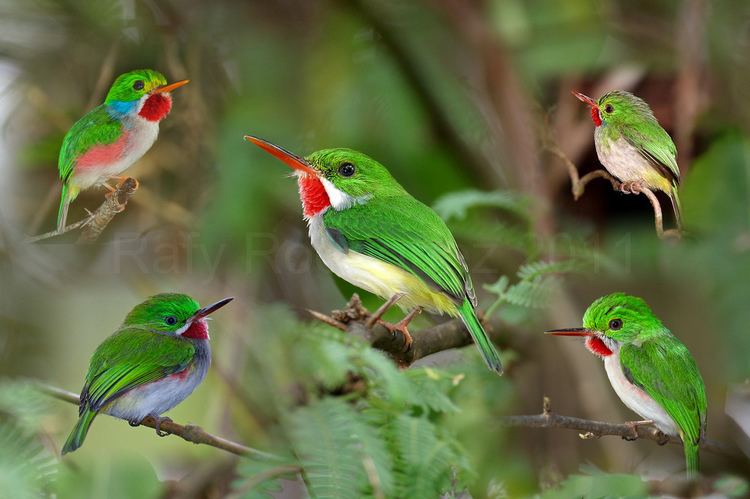
Cuban tody
Taxonomy and systematics
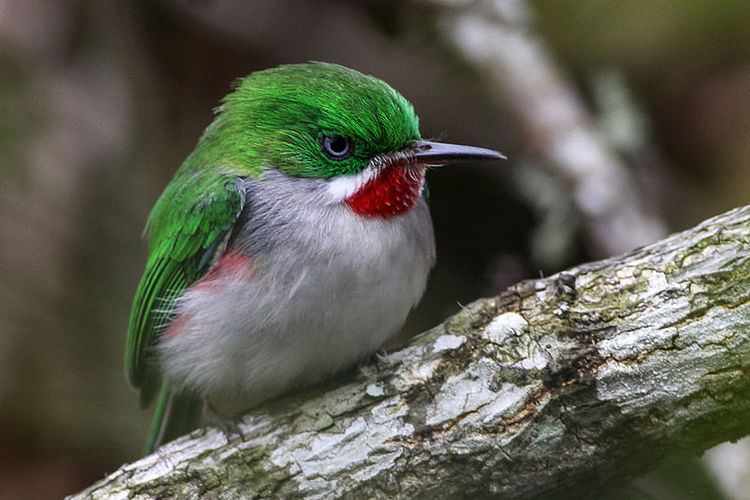
The todies were originally placed in the kingfisher genus Alcedo before being placed in the genus Todus in 1760 by Mathurin Jacques Brisson. They have been linked to a large number of potential relatives since then, including nightjars, trogons, barbets, jacamars, puffbirds, kingfishers, motmots and even some passerine species such as broadbills, cotingas and flowerpeckers. It was even placed in its own order, Todiformes, before being placed in the Coraciiformes
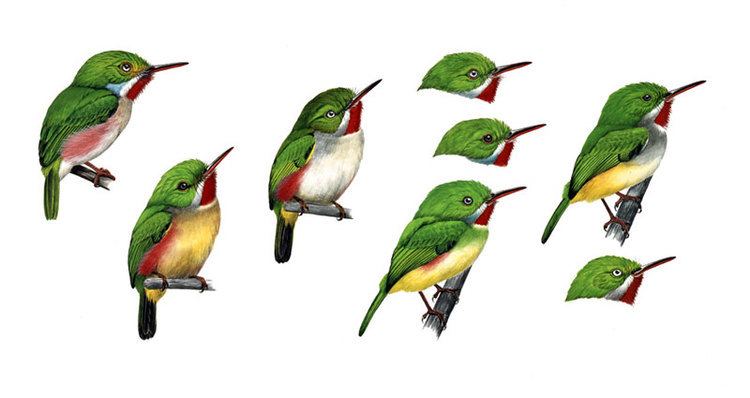
Genetic analysis of the extant (living) species suggests that they diversified between 6-7 million years ago. The fossil record is not good for the family, but three species of tody have been described from North America, Germany and France. These fossils suggest that the family was once more widespread than it is today. Species from the fossil genus, Palaeotodus, are larger than living species and may have been closer in size to the tody motmot.
Distribution and habitat
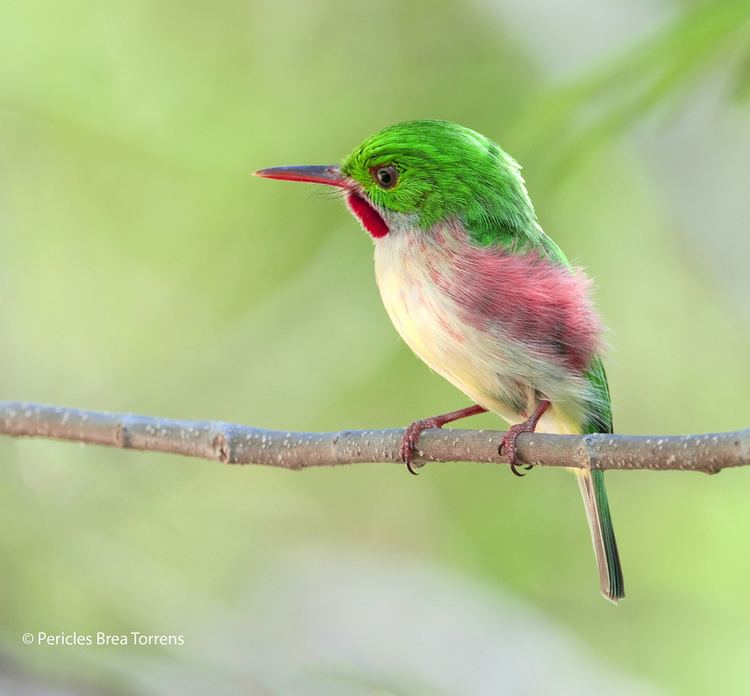
The todies are one of two bird families endemic to the islands of the Caribbean, the other being the palmchat. These are small, near passerine species of forests of the Greater Antilles: Puerto Rico, Jamaica, and Cuba, with adjacent islands, have one species each, and Hispaniola has two, the broad-billed tody in the lowlands (including Gonâve Island) and the narrow-billed tody in the highlands.
Description
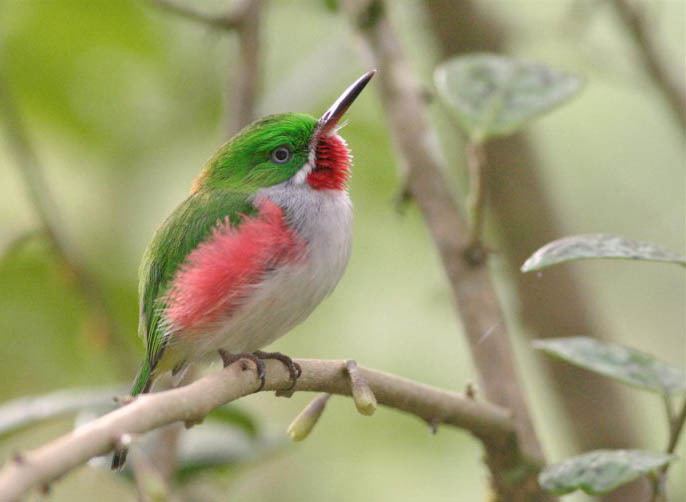
Todies range in weight from 5 to 7 g and in length from 10 to 11.5 cm. They have colourful plumage, resemble kingfishers in their general shape. They have green heads, backs and wings, red throats (absent in immature Puerto Rican, broad-billed, and narrow-billed Todies) with a white and blue-grey stripe on each side, and yellow undertail coverts; the colour of the rest of the undersides is pale and varies according to species. The irises are pale grey. They have long, flattened bills (as do many flycatching birds) with serrated edges; the upper mandible is black and the lower is red with a little black. The legs, and especially the feet, are small. Todies are highly vocal, except that the Jamaican tody seldom calls in the non-breeding season (August to November); they give simple, unmusical buzzing notes, beeps, and guttural rattles, puffing their throats out with every call. Their wings produce a "strange, whirring rattle", though mostly when courting or defending territory in the Puerto Rican tody.
Diet
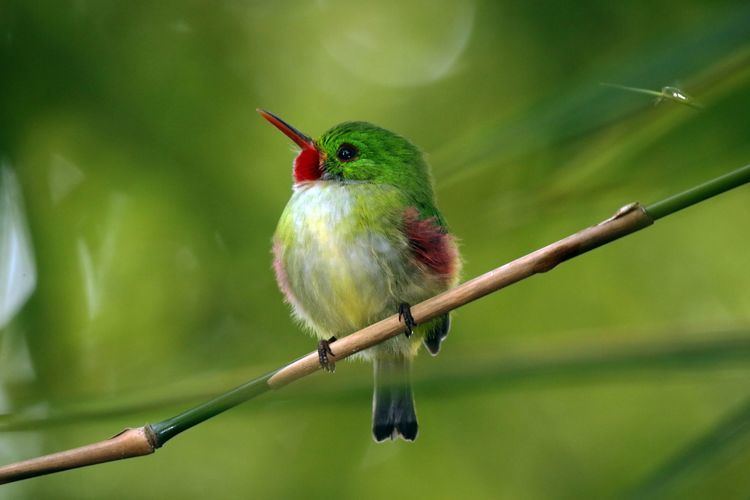
Todies eat small prey such as insects and lizards. Insects, from 50 families have been identified in their diet, particularly grasshoppers, crickets, beetles, bugs, butterflies, bees, wasps, and ants, form the greater part of the diet. Spiders and millipedes may also be taken, as is a small amount of fruit (2% of the diet).
Their prefered habitat for foraging in the forest understory. Todies typically sit on a low, small branch, singly or in pairs, keeping still or stepping or hopping sideways. When they see prey moving on the lower surface of a leaf, they fly a short distance (averaging 2.2 m in the broad-billed tody and 1.0 m in the Puerto Rican tody), diagonally upward to glean it. They may also take prey from the ground, occasionally chasing it with a few hops. Todies are generally sedentary; the longest single flight known for the broad-billed tody is 40 m. Their activity is greatest in the morning when sunny weather follows rain, and in March and September.
Todies are highly territorial but will join mixed-species foraging flocks composed of resident species and migrants from North America, when they pass through their territories.
Breeding
Like most of the Coraciiformes, todies nest in tunnels, which they dig with their beaks and feet in steep banks or rotten tree trunks. The tunnel is 30 cm long in the Cuban and narrow-billed Todies, 30 to 60 cm in the broad-billed tody, and ends in a nest chamber, generally not reused. They lay about four round white eggs in the chamber. Both parents incubate but are surprisingly inattentive to the eggs. The young are altricial and stay in the nest until they can fly. Both parents also care for the nestlings, much more attentively; they may feed each chick up to 140 times per day, the highest rate known among birds.
